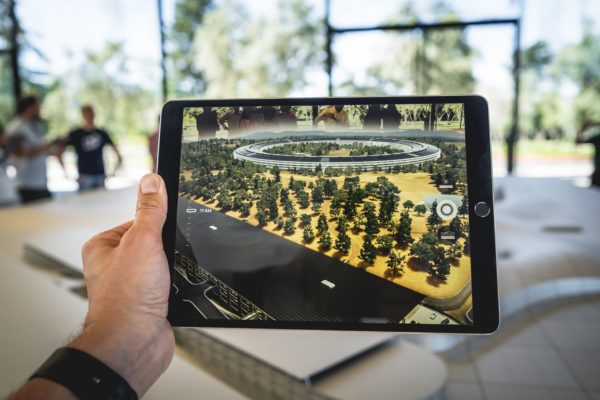Deakin has devised a simulator that enables Australian astronauts and pilots to complete high-G training safely.
The world-leading researchers and facilities at Deakin’s Institute for Intelligent Systems Research and Innovation (IISRI) have put Australia at the forefront of aviation and space training technologies, thanks to a centrifuge nicknamed CYCLONE.
Designed, built and tested at Deakin’s Waurn Ponds campus, CYCLONE is Australia’s first high-G centrifuge platform that will safely train astronauts and Royal Australian Air Force pilots to cope with the high levels of acceleration, known as G-forces, associated with modern aircraft.
Australia’s first high-G training ground
CYCLONE is a human-capable, low-cost, high-G centrifuge system activated by a rotating electric motor which acts as a counterweight.
The system will increase Australia’s defence capability in the area of air combat training by providing a platform for simulation and training in Australia, removing the need for Australian trainee pilots to relocate overseas to complete high-G training.
It can also be used for astronaut training, supporting the growth of Australia’s space industry since the launch of the Australian Space Agency in 2018.
Modern jet fighters have more power, speed, rapid acceleration and manoeuvrability than ever before. This increased performance exposes pilots to greater physical and psychological stress, which can lead to a Gravity-induced Loss of Consciousness (G-LOC).
G-LOC threatens the pilot’s life, the mission and the multi-million-dollar aircraft. High-G training, using the CYCLONE program, improves aviators’ and astronauts’ tolerance of G-forces.
Centrifuge training, anti-G straining manoeuvres and knowledge of acceleration physiology are all required to prepare individuals to withstand G-forces and are included in the training provided through the CYCLONE program.
The platform compliments and extends cutting-edge research in advanced motion training platforms under way at IISRI.
“Deakin provided me with the most fertile ground to take ideas and concepts from fundamental research to a commercial-ready state,” says Professor Saeid Nahavandi, Director of IISRI and Pro Vice-Chancellor (Defence Technologies).
“CYCLONE will recreate astronauts’ experience in space for both at-launch and on re-entry, and much more.”
He leads the project along with IISRI researchers, including Dr Navid Mohajer, Dr Zoran Najdovski, Dr Syed Salaken and Dr Matthew Watson.
Australian Defence Force training on our doorstep
CYCLONE allows the Australian Defence Force access to world-leading systems within Australia, and pilots no longer need to conduct G-Force training overseas.
In defence, space and aerospace, training vehicle operators in real life situations using actual vehicles is expensive, impractical and potentially dangerous.
Motion simulators such as CYCLONE can allow drivers, pilots and astronauts to experience a range of training and emergency scenarios in the safety of a virtual environment, while improving competence in a wider variety of situations, like different environments and weather conditions, over a shorter time period.
Simulators are also the safest and most cost-effective tools for virtual prototyping, testing new land and air vehicle designs and conducting user behaviour analysis.
With the capability to generate up to 9G-centrifugal acceleration with a maximum onset rate of 5Gs, CYCLONE is a highly agile system that provides pilots with multiple flight scenarios in a controlled environment.
It can perform rapid manoeuvres with multi-axis motions at sustained high-G forces and rapid onset rates.
Pilots are taught Anti-G Straining Manoeuvres, are able to practice breathing techniques and become adjusted to an anti-G suit in the CYCLONE centrifuge.
“It’s essential that our Australian Defence Force has access to world-leading systems, resources and training, but it is equally important for both our security and our economy that they are able to source locally-designed and built technology,” says Cameron Selkrig, CEO of UMS Pty Ltd.
World-class research solving real-world problems
With the development of CYCLONE and launch of UMS: Universal Motion Simulation – a spin-off company established to commercialise motion simulation capability – Deakin has proven its capacity to translate world-class research into innovative and practical applications that solve real-world problems and benefit industry and society.
Located in Deakin’s advanced manufacturing innovation hub, ManuFutures, at the Waurn Ponds campus, UMS: Universal Motion Simulation is currently developing production techniques and processes, ahead of scale production and delivery to the defence industry for driver, pilot and sailor training.
The UMS company’s core Reconfigurable Driver Simulator (RDS) is a highly-dynamic motion platform consisting of a six-degree-of-freedom robotic arm, interchangeable replica vehicle cabins, haptically-enabled control devices and immersive simulation environments, featuring detailed vehicle dynamics and terrain modelling.
The simulators will be capable of training army drivers in a range of vehicles, including the Boxer 8×8 CRV, M1A1 Abrams Main Battle Tank, and future Infantry Fighting Vehicles.
The RDS contract with the Australian Defence Force has created 12 jobs and in 2022, UMS expects to employ 20 staff.
A $260,000 Australian Government grant for a feasibility study was announced in June 2020.
CYCLONE’s low-Cost Advanced Motion Training for Aircrew Safety and Human Performance is part of an ongoing Capability and Technology Demonstrator (CTD) program, managed and funded by the Federal Government through its Defence Innovation Hub.
Saeid Nahavandi is Director of Deakin’s Institute for Intelligent Systems Research and Innovation and a Pro Vice-Chancellor (Defence Technologies). Check out this profile to learn more about his research.



